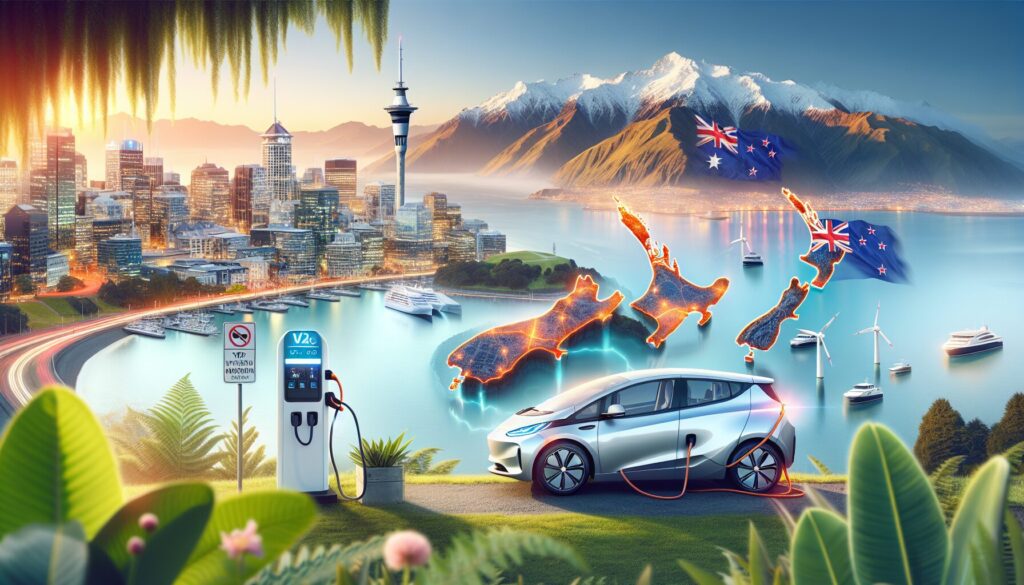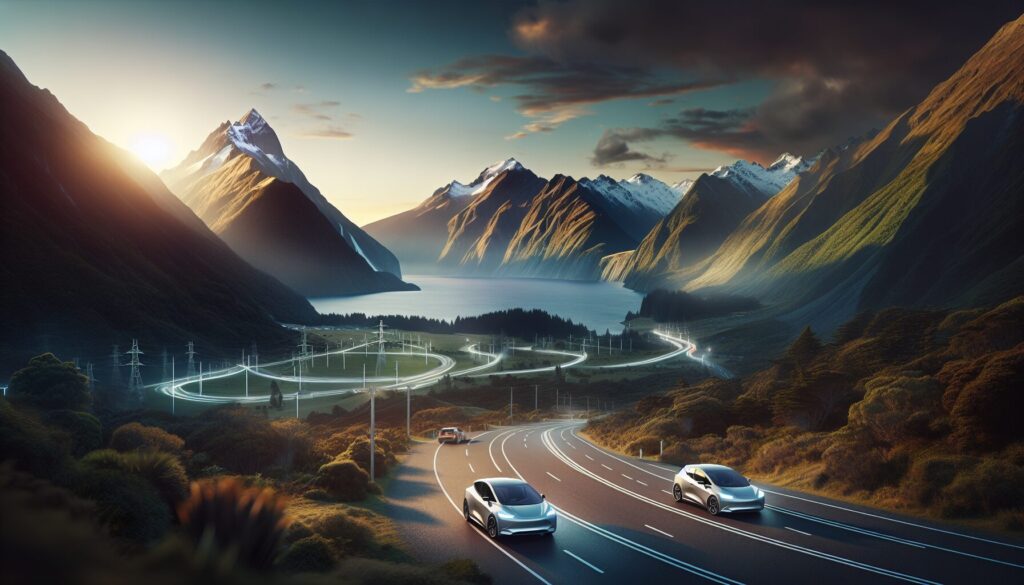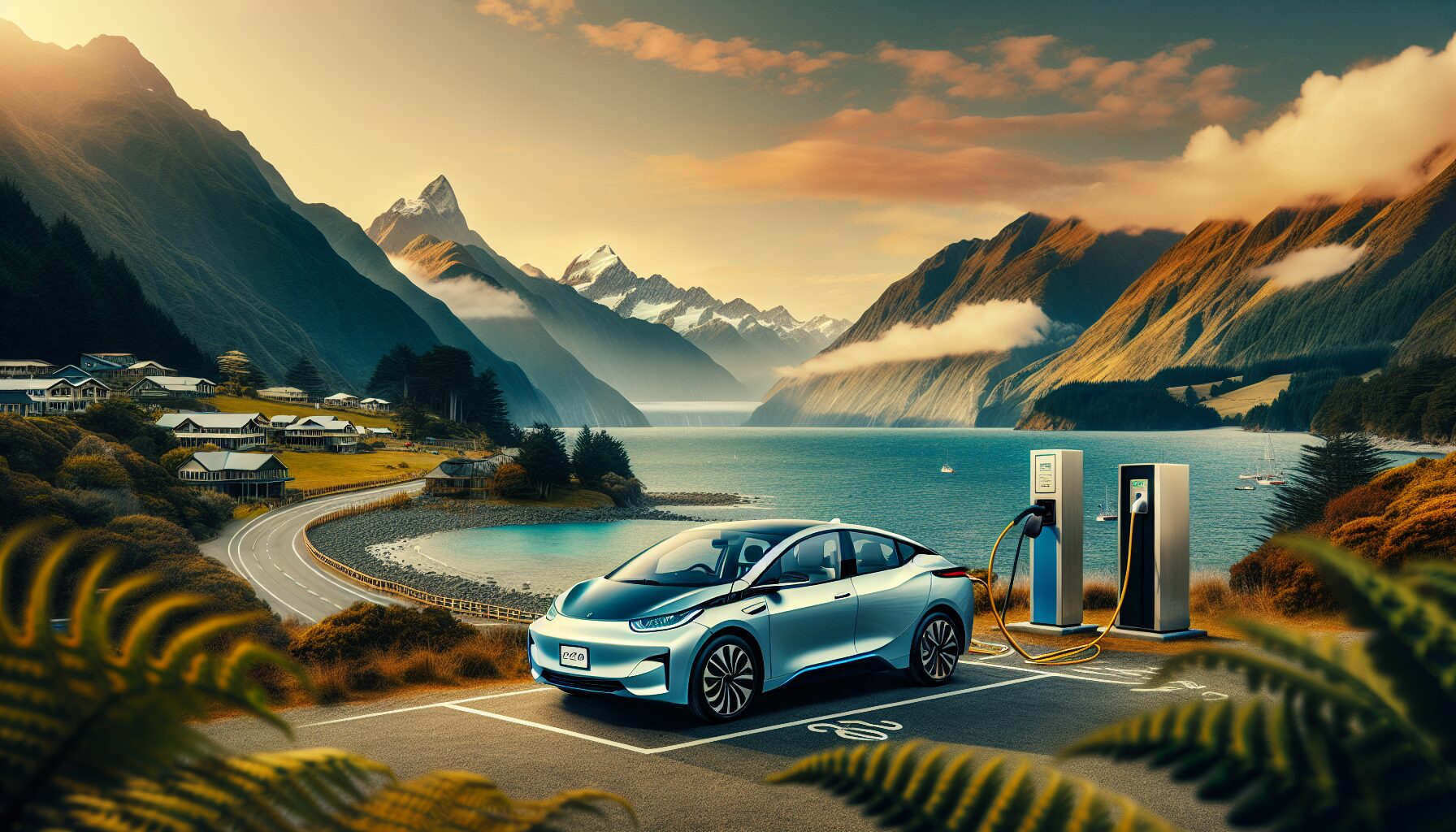There’s something magical about how technology transforms our lives, and V2G (Vehicle-to-Grid) technology is no exception! Imagine your electric vehicle not just as a mode of transport but as a part of an interconnected energy system. My interest in this began when I first learned about bi-directional EV chargers. They allow energy to flow both to and from the grid, making your vehicle a mobile energy source. Smart grid technology plays a crucial role here, ensuring energy is distributed efficiently. In New Zealand, we’re seeing distributed energy resources (DER) management systems becoming more common. They help manage the balance between energy supply and demand. I once discussed this with a tech-savvy friend who works at Transpower New Zealand. His insights on how V2G can stabilize the grid in places like Auckland were eye-opening. It’s all about using what’s available to create smarter, greener energy solutions.
Why New Zealand is Ideal for V2G
New Zealand’s breathtaking landscapes and innovative spirit make it a fantastic playground for V2G technologies. I recall an afternoon spent at a local café in Wellington, where an engineer friend excitedly shared insights about the Transpower New Zealand Limited pilot projects. They were diving deep into the integration of Distributed Energy Resource Management Systems (DERMS) with V2G strategies. It was fascinating to hear how bidirectional inverter technology is playing a crucial role in balancing the grid while maximizing renewable energy use.
Moreover, New Zealand’s commitment to sustainability is impressive. The country’s abundant renewable resources, like wind and hydro, create the perfect backdrop for V2G initiatives. On a road trip through the South Island, I stopped at a small rural town, where I met a local farmer using V2G systems to power his operations. The farmer was hooked on the potential of V2G communication protocols to optimize energy consumption and contribute back to the grid. It was a vivid illustration of how V2G can benefit even the most remote communities.
Community and Collaboration
Additionally, the Kiwi spirit of collaboration and community-mindedness is another reason V2G integration thrives here. Organizations like EECA are actively promoting electric vehicle adoption, which naturally complements V2G growth. Local councils are engaging with citizens to develop smart grid solutions, ensuring that everyone benefits from these technological advancements.
Furthermore, the government’s proactive policies and incentives ensure that V2G projects have a solid foundation to build on. These efforts not only support environmental goals but also stimulate economic opportunities. New Zealanders are embracing this change, proving that with the right mix of technology and community effort, anything is possible.
Top Cities for V2G Integration

Wellington, with its innovative spirit and forward-thinking policies, is a fantastic place for V2G systems. Picture this: I’m walking along the waterfront, chatting with a friend who’s an energy consultant. We dive into the nitty-gritty of grid capacity analysis in the city. It’s fascinating how Wellington’s urban planning integrates bi-directional EV charging stations into its infrastructure. This city knows how to optimize its energy resources through cutting-edge Distributed Energy Resource Management Systems. Talk about setting the bar high! Moreover, the city’s commitment to sustainability makes it a leader in adopting new technologies. They really know how to make the most of their natural wind resources, too. It’s no wonder Wellington’s a prime candidate for V2G development.
Now, let’s cruise over to Auckland. This bustling metropolis isn’t just about its vibrant culture and stunning skyline. Auckland’s also making waves in the renewable energy sector. I once attended a tech conference there and heard from industry leaders about the potential of integrating V2G technology into the city’s extensive network of electric buses. The city’s large population and increasing number of EV owners create a perfect storm for V2G potential. With key players like Transpower New Zealand Limited and EECA actively promoting energy efficiency, Auckland is undoubtedly poised to leverage its resources for V2G integration.
Christchurch: A Green Revolution
Christchurch, known for its resilience and innovation post-earthquake, is another city embracing V2G. I love visiting the city and seeing how it’s rebuilt itself smarter and greener. The local government is keen on implementing DERMS to manage the growing number of EVs effectively. They’ve even set goals for increasing renewable energy sources, making it ripe for V2G systems. According to Stats NZ, Christchurch has one of the fastest-growing populations in the country, which means more EVs and a greater need for innovative energy solutions. The city’s commitment to sustainability and technology is truly inspiring.
Benefits of V2G for Communities
Imagine the buzz in a community where everyone’s contributing to a sustainable future through V2G technology! One summer, I visited a friend in Wellington, and we chatted about how V2G systems can transform local communities. His neighborhood had recently adopted distributed energy resource management systems (DERMS), and the change was palpable. The community’s energy consumption was optimized, thanks to the efficient use of three-phase power inverters and grid frequency regulation algorithms. It was like witnessing the future, right there in his backyard.
Beyond the technical marvels, the social benefits are profound. V2G integration fosters a sense of community. Residents feel they’re part of something bigger, working together to manage energy use effectively. It’s not just about saving on electricity bills, though that’s a fantastic perk. People are more connected, sharing tips on how to maximize their energy efficiency, and it brings a sense of camaraderie.
Environmental and Economic Advantages
Additionally, the environmental impact is significant. Reducing reliance on non-renewable energy sources means a smaller carbon footprint. In communities like Wellington, where sustainable living is a priority, this is a big win. The reduction in carbon emissions is not just beneficial for the planet; it also enhances the local environment, making it cleaner and healthier for everyone.
From an economic perspective, V2G systems can lead to substantial savings. Households can earn money by selling excess energy back to the grid. It’s a win-win! Plus, this approach can alleviate pressure on national grids, reducing the chances of blackouts. I’ve seen firsthand how this model works efficiently, and it’s inspiring to see such innovations taking root in New Zealand.
Even organizations like EECA are getting involved, promoting awareness and support for these initiatives. With the right implementation strategies, which you can learn more about by avoiding common pitfalls through our guide on implementing V2G technology correctly, communities can thrive economically and environmentally. Embracing this technology not only advances sustainability goals but also strengthens local communities.
Challenges in Implementing V2G

Strolling through Wellington one afternoon, I overheard a lively discussion about the collaboration between Distribution Network Operators (DNOs) and electric vehicle enthusiasts. It got me thinking about how crucial these partnerships are for V2G integration here. Imagine a web of bi-directional EV chargers communicating seamlessly with demand response management systems. Exciting, right? But making this dream a reality isn’t without its hurdles.
Getting everyone on the same page is a big one. Coordination between DNOs, energy providers, and vehicle owners requires careful planning. I once chatted with a DNO representative who shared stories of negotiating with various stakeholders. They mentioned how complex it is to align everyone’s objectives while ensuring grid stability. This complexity can be a real barrier to progress.
Technical and Regulatory Hurdles
Technical challenges are also significant. Integrating Distributed Energy Resource Management Systems (DERMS) with existing infrastructure isn’t a walk in the park. These systems need to handle varying demand and supply levels without a hitch. Additionally, regulatory frameworks must evolve to support these technologies. The Energy Efficiency and Conservation Authority (EECA) plays a pivotal role in this area, but change takes time.
Another issue is public awareness and acceptance. Many Kiwis are still unfamiliar with how Vehicle-to-Grid technology works. Overcoming this requires robust educational initiatives. I remember speaking to a fellow EV owner who had no idea about the benefits of V2G. They were thrilled when they learned how it could save them money and help the environment.
Finally, there’s the cost factor. Implementing V2G technology involves upfront investments in infrastructure and technology. The Transpower New Zealand Limited is actively working to address these challenges, but financial incentives could speed things up. Solutions like subsidies for bi-directional chargers might encourage more people to jump on board.
Future of V2G in New Zealand
It’s amazing how New Zealand is embracing innovative energy solutions. Just last week, I was having a cup of coffee with a friend who works in the renewable energy sector. We discussed how the future of V2G in our country is looking brighter than ever. With the growing use of bi-directional inverter technology, our electric vehicles can soon become a key part of the energy grid. Isn’t that exciting? This technology allows electric vehicles to not only draw energy but also feed it back into the grid. It’s like your car is moonlighting as a mini power plant when you’re not driving it!
One thing that stands out is the role of Distribution Network Load Analysis in optimizing this process. By understanding peak demand times, we can effectively manage when and how much energy to draw from vehicles. It’s truly fascinating how this analysis helps balance supply and demand, ensuring a stable energy flow. In Wellington, for example, these analyses are already shaping strategies for efficient energy use.
Collaboration and Innovation
Another critical factor is the cooperation between organizations like Transpower New Zealand Limited and EECA. Their collaboration is paving the way for more seamless Vehicle-to-Grid communication protocols. This helps ensure that the technology is reliable and efficient. Plus, with advancements in Distributed Energy Resource Management Systems, integrating these solutions becomes even more accessible. The synergy between these technologies and organizations is setting a solid foundation for the future.
Imagine a world where our electric vehicles help power our homes and businesses. It’s not too far off. As technology continues to evolve, the potential for V2G integration in New Zealand is boundless. With every step forward, we’re not just witnessing change; we’re part of it. Who knows, maybe one day our cars will be as essential to our energy grid as they are to our daily commutes.
Conclusion
Ultimately, New Zealand’s commitment to innovation and sustainability is paving the way for a successful integration of Vehicle-to-Grid technology, transforming electric vehicles from mere modes of transportation into vital components of the energy ecosystem. As cities like Wellington, Auckland, and Christchurch embrace these advancements, the synergy between communities, government policies, and technological innovations is setting a precedent for a greener future. With continued collaboration and dedication, New Zealand is not just witnessing the future of energy use; it’s actively shaping it. Keep driving towards a sustainable tomorrow!
Array
Frequently Asked Questions
What are the benefits of V2G integration in New Zealand's urban areas?
V2G integration in New Zealand’s urban areas offers numerous benefits, including enhanced grid stability, reduced energy costs, and improved energy efficiency. Urban areas like Auckland and Wellington experience high energy demands, and V2G technology can help manage peak loads by using electric vehicles as energy storage units. This can lead to a more sustainable and resilient urban energy system.
How does V2G technology support renewable energy adoption in rural New Zealand?
V2G technology supports renewable energy adoption in rural New Zealand by allowing electric vehicles to store excess energy generated from renewable sources like wind and solar. This stored energy can then be fed back into the grid during periods of low renewable generation or high demand. In rural areas, where renewable energy resources are abundant, V2G can facilitate a more balanced and reliable energy supply, promoting greater use of clean energy.
What are the challenges of implementing V2G systems in New Zealand?
Implementing V2G systems in New Zealand faces several challenges, including the need for significant infrastructure upgrades, regulatory hurdles, and the initial cost of technology adoption. The country’s energy grid requires updates to accommodate bidirectional energy flow and ensure compatibility with V2G systems. Additionally, developing clear policies and incentives for both consumers and utility companies is crucial to encourage widespread adoption and integration of V2G technology.
Continue Exploring
Unlock the future of energy with insights on how Vehicle-to-Grid (V2G) technology is shaping New Zealand's regulatory landscape. Dive into the latest laws and regulations that could redefine your energy consumption and sustainability goals.


Leave a Reply